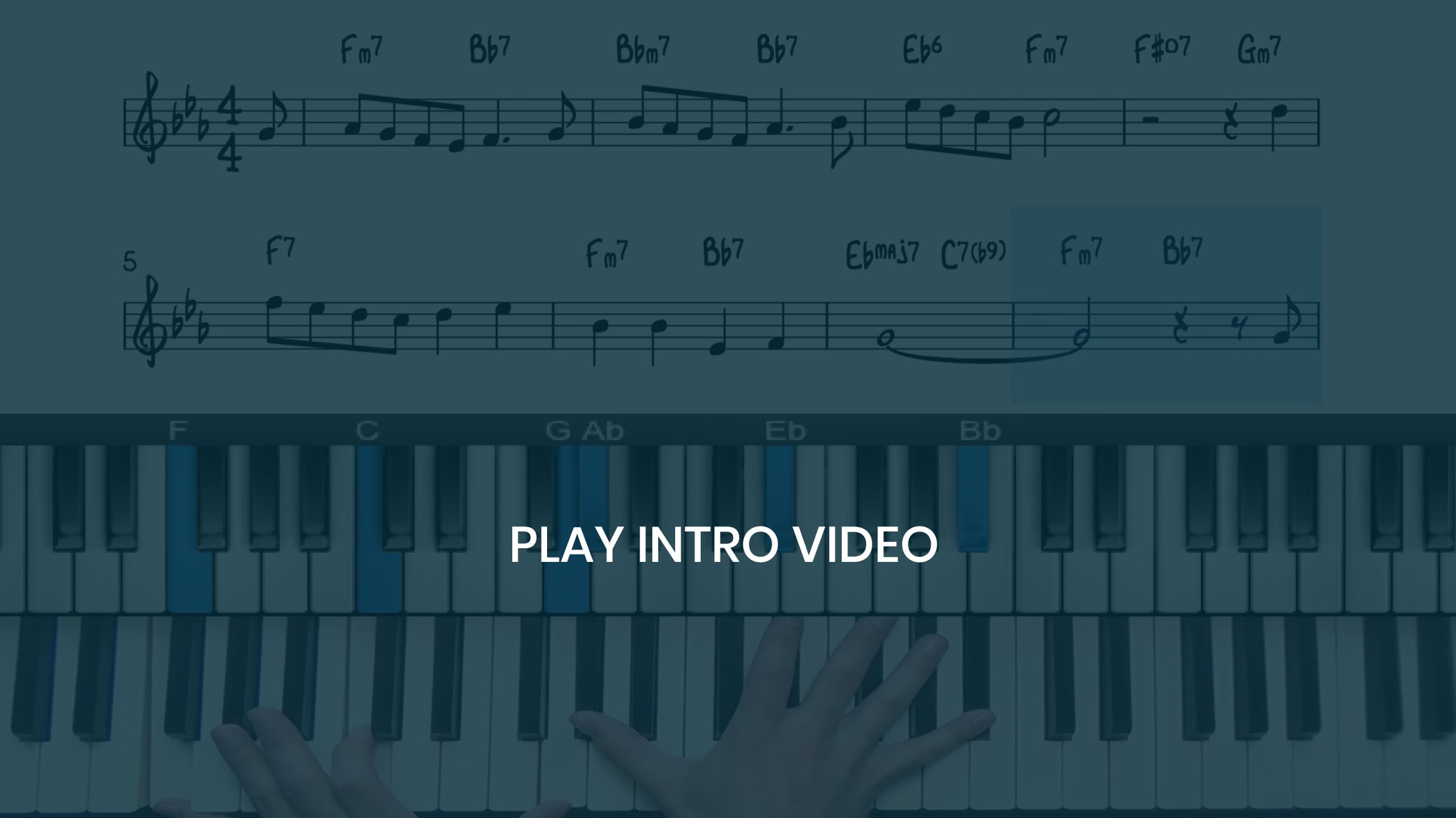Course Lessons
1. Theory Lessons
- 1. 11625 & 436251 Progressions17:27
- 1. 2Beautiful Intro Progression05:15
- 1. 3Stunning Diatonic Progression16:49
- 1. 4Minor Introductions & 1625s12:41
2. Jazz Standard Studies
- 2. 1The Way You Look Tonight Tutorial Part 119:16
- 2. 2The Way You Look Tonight Part 226:41
- 2. 3As Time Goes By Tutorial12:41
- 2. 4As Time Goes By: Developing Intros12:27
- 2. 5As Time Goes By: Stride25:32
- 2. 6My Romance: LH Voicings18:43
- 2. 7My Romance Full Solo Arrangement18:21
- 2. 8My Romance – Creating An Introduction06:56
- 2. 9When I Fall In Love Tutorial30:35
- 2. 10This Masquerade Tutorial27:08
- 2. 11Blue Moon Tutorial24:57
- 2. 12Blue Moon Intro & Outro07:05
Course Info
This course start with a theoretical study of the 1625 progression and its variations. The 1625 progression is great for introductions, endings and also transitions between tunes.
The reason the 1625 works so well as an introduction is because you are playing all of the chords from the key. And so it sets up the tonality of the tune before you even play the first chord of the form.
It’s also a nice way to ‘dabble’ with improvisation, add in some scale passages or chord tones over the 1625, or perhaps quote the melody of the next song whilst cycling through the 1625s, then on the final 5, you start the next tune.
The jazz standard lessons in this course all have a focus on improvised introductions and give specific guidance on manipulating and enhancing the 1625 progression. After watching the theory lesson and applying the concepts in context of the jazz standard, you will have a thorough understanding of the 1625 and it’s usage and application in jazz piano.
To get the most out of this course you should have a good working knowledge of chord extensions and alterations, and be comfortable with the concept of chord substitution and rehamonisation. Check out the courses on these topics for more information.




